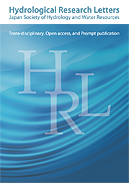Volume 7, Issue 3
Displaying 1-6 of 6 articles from this issue
- |<
- <
- 1
- >
- >|
Original Research Letter
-
2013Volume 7Issue 3 Pages 42-47
Published: 2013
Released on J-STAGE: July 31, 2013
Download PDF (695K) -
2013Volume 7Issue 3 Pages 48-53
Published: 2013
Released on J-STAGE: August 03, 2013
Download PDF (753K) -
2013Volume 7Issue 3 Pages 54-59
Published: 2013
Released on J-STAGE: September 06, 2013
Download PDF (280K) -
2013Volume 7Issue 3 Pages 60-65
Published: 2013
Released on J-STAGE: September 18, 2013
Download PDF (679K) -
2013Volume 7Issue 3 Pages 66-72
Published: 2013
Released on J-STAGE: September 20, 2013
Download PDF (1179K) -
2013Volume 7Issue 3 Pages 73-78
Published: 2013
Released on J-STAGE: September 20, 2013
Download PDF (307K)
- |<
- <
- 1
- >
- >|
